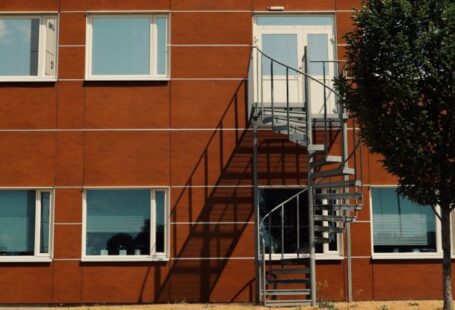Are you looking to create the illusion of higher ceilings in your space? Vertical design elements play a crucial role in making a ceiling appear taller than it actually is. By incorporating specific design strategies, you can transform the look and feel of a room, making it feel more spacious and open. From lighting to color choices, there are various techniques you can use to elevate your ceiling height visually. Let’s explore some key vertical design elements that can make a ceiling look higher.
**Lighting Fixtures and Placement**
Strategically placed lighting can draw the eye upwards, creating the illusion of a higher ceiling. Consider installing pendant lights or chandeliers that hang lower towards the center of the room. This vertical line created by the lighting fixtures can help elongate the space. Additionally, recessed lighting along the perimeter of the ceiling can provide ambient light without overwhelming the room. By illuminating the ceiling edges, you can visually push the ceiling upwards, making it seem taller.
**Floor-to-Ceiling Curtains**
Floor-to-ceiling curtains can add vertical lines to a room, emphasizing the height of the ceiling. Opt for curtains that are hung close to the ceiling rather than just above the window frame. This design trick draws the eye upwards, making the distance between the top of the window and the ceiling appear larger. Choose curtains in light, airy fabrics to enhance the sense of space and light in the room.
**Vertical Stripes and Patterns**
Incorporating vertical stripes or patterns into your decor can create the illusion of height in a room. Consider using striped wallpaper, tall bookshelves, or vertical paneling to add visual interest and draw the eye upwards. Vertical lines naturally guide the gaze upwards, making the ceiling appear higher than it is. Whether through paint, wallpaper, or decor accents, incorporating vertical elements can transform the perception of your ceiling height.
**Minimalist Furniture with Vertical Emphasis**
When selecting furniture for a room with low ceilings, opt for pieces with a vertical emphasis. Taller furniture such as bookcases, floor lamps, or high-backed chairs can help elongate the room and create a sense of verticality. Avoid bulky, horizontal furniture pieces that can visually lower the ceiling height. By choosing streamlined, vertical furniture, you can enhance the feeling of airiness and height in the space.
**Mirrors to Reflect Light**
Mirrors are a powerful tool in interior design for creating the illusion of space and height. Placing mirrors strategically on walls can reflect natural light and artificial lighting sources, brightening the room and making it feel more expansive. Consider placing a large mirror on a wall opposite a window to reflect the outdoor scenery and bring more light into the room. The reflective surface of mirrors can visually extend the vertical lines in a space, making the ceiling appear higher.
**Paint Colors and Vertical Contrast**
Selecting the right paint colors can have a significant impact on how high your ceilings appear. Opt for light, neutral colors on the ceiling to create a sense of openness and height. Painting walls in a color that contrasts slightly with the ceiling can emphasize the vertical dimension of the room. By creating a subtle distinction between the walls and the ceiling, you can visually lift the ceiling and make it seem taller.
**Conclusion: Elevating Your Ceiling Height**
By incorporating vertical design elements into your space, you can create the illusion of higher ceilings and transform the overall look and feel of a room. From lighting fixtures and floor-to-ceiling curtains to vertical patterns and minimalist furniture, there are various strategies you can use to make a ceiling appear taller. Experiment with different techniques to find the right balance and enhance the verticality of your space. With careful consideration and thoughtful design choices, you can elevate your ceiling height and create a more spacious and inviting environment.





